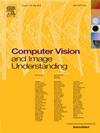Graph-based Moving Object Segmentation for underwater videos using semi-supervised learning
IF 4.3
3区 计算机科学
Q2 COMPUTER SCIENCE, ARTIFICIAL INTELLIGENCE
引用次数: 0
Abstract
Moving object segmentation (MOS) using passive underwater image processing is an important technology for monitoring marine habitats. It aids marine biologists studying biological oceanography and the associated fields of chemical, physical, and geological oceanography to understand marine organisms. Dynamic backgrounds due to marine organisms like algae and seaweed, and improper illumination of the environment pose challenges in detecting moving objects in the scene. Previous graph-learning methods have shown promising results in MOS, but are mostly limited to terrestrial surface videos such as traffic video surveillance. Traditional object modeling fails in underwater scenes, due to fish shape and color degradation in motion and the lack of extensive underwater datasets for deep-learning models. Therefore, we propose a semi-supervised graph-learning approach (GraphMOS-U) to segment moving objects in underwater environments. Additionally, existing datasets were consolidated to form the proposed Teleost Fish Classification Dataset, specifically designed for fish classification tasks in complex environments to avoid unseen scenes, ensuring the replication of the transfer learning process on a ResNet-50 backbone. GraphMOS-U uses a six-step approach with transfer learning using Mask R-CNN and a ResNet-50 backbone for instance segmentation, followed by feature extraction using optical flow, visual saliency, and texture. After concatenating these features, a -NN Graph is constructed, and graph node classification is applied to label objects as foreground or background. The foreground nodes are used to reconstruct the segmentation map of the moving object from the scene. Quantitative and qualitative experiments demonstrate that GraphMOS-U outperforms state-of-the-art algorithms, accurately detecting moving objects while preserving fine details. The proposed method enables the use of graph-based MOS algorithms in underwater scenes.
基于图的半监督学习水下视频运动目标分割
基于被动水下图像处理的运动目标分割(MOS)是海洋生物栖息地监测的重要技术。它帮助海洋生物学家研究生物海洋学以及相关的化学、物理和地质海洋学领域,以了解海洋生物。藻类和海藻等海洋生物的动态背景以及不适当的环境照明对场景中运动物体的检测提出了挑战。以前的图学习方法在MOS中显示了有希望的结果,但大多局限于地面视频,如交通视频监控。传统的对象建模在水下场景中失败,因为鱼的形状和颜色在运动中退化,并且缺乏广泛的水下数据集用于深度学习模型。因此,我们提出了一种半监督图学习方法(GraphMOS-U)来分割水下环境中的运动物体。此外,现有数据集被整合成拟议的硬骨鱼分类数据集,专门为复杂环境中的鱼类分类任务设计,以避免看不见的场景,确保在ResNet-50骨干网上复制迁移学习过程。GraphMOS-U使用六步迁移学习方法,使用Mask R-CNN和ResNet-50主干进行实例分割,然后使用光流,视觉显著性和纹理进行特征提取。将这些特征连接起来后,构建k-NN图,并应用图节点分类将对象标记为前景或背景。前景节点用于从场景中重建运动物体的分割图。定量和定性实验表明,GraphMOS-U优于最先进的算法,可以准确地检测移动物体,同时保留精细的细节。该方法使基于图的MOS算法能够在水下场景中使用。
本文章由计算机程序翻译,如有差异,请以英文原文为准。
求助全文
约1分钟内获得全文
求助全文
来源期刊

Computer Vision and Image Understanding
工程技术-工程:电子与电气
CiteScore
7.80
自引率
4.40%
发文量
112
审稿时长
79 days
期刊介绍:
The central focus of this journal is the computer analysis of pictorial information. Computer Vision and Image Understanding publishes papers covering all aspects of image analysis from the low-level, iconic processes of early vision to the high-level, symbolic processes of recognition and interpretation. A wide range of topics in the image understanding area is covered, including papers offering insights that differ from predominant views.
Research Areas Include:
• Theory
• Early vision
• Data structures and representations
• Shape
• Range
• Motion
• Matching and recognition
• Architecture and languages
• Vision systems
 求助内容:
求助内容: 应助结果提醒方式:
应助结果提醒方式:


